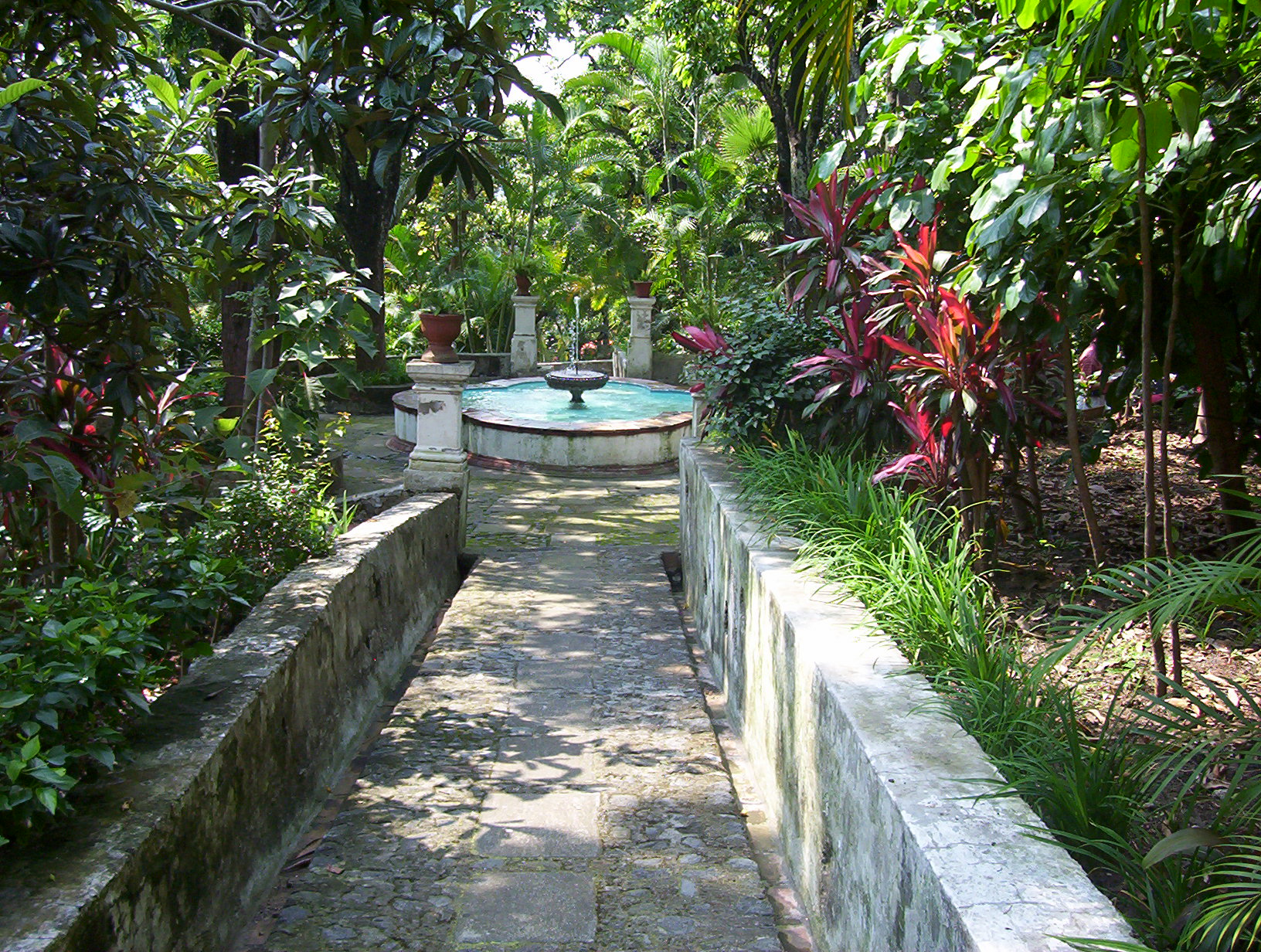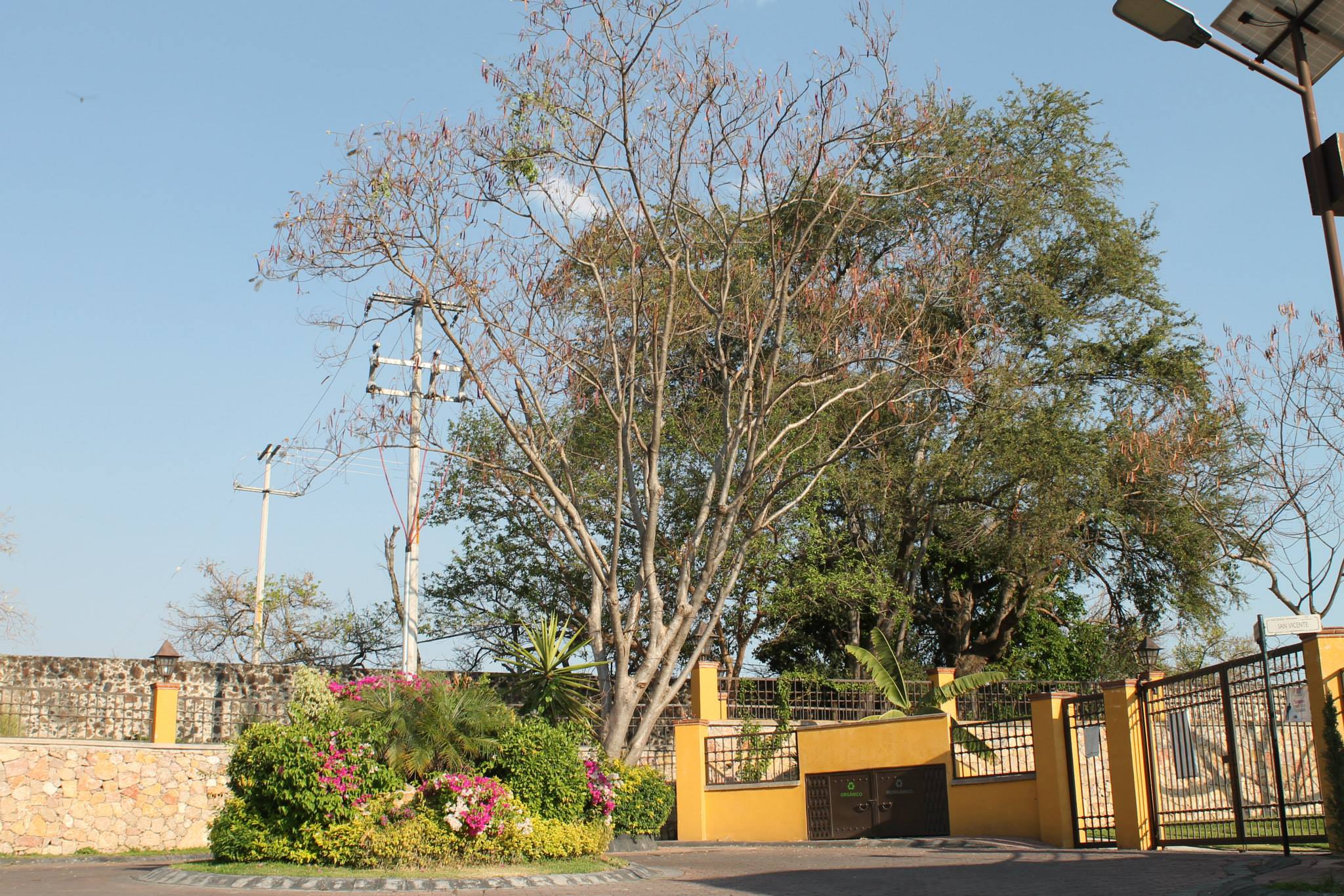|
Chinelos
Chinelos are a kind of traditional costumed dancer which is popular in the Mexican state of Morelos, parts of the State of Mexico and the Federal District of Mexico City, especially the boroughs of Milpa Alta and Xochimilco. The tradition arose from the blending of indigenous and Catholic traditions, most notably Carnival, with its permission to be masked and to mock. Chinelos mock Europeans and European mannerisms from the colonial period up to the end of the 19th century. The Chinelos tradition is strongest in Morelos, especially around Carnival, but Chinelos now appear at other festivities such as Independence Day celebrations, private parties and more. History The word “chinelos” is derived from the Nahuatl word “zineloquie” which means “disguised.” The dance is one of many to develop after the Spanish conquest as native traditions and rites blended into Christian festivals. One of these is Carnival, with its traditions of wearing masks, role reversal, anonymity ... [...More Info...] [...Related Items...] OR: [Wikipedia] [Google] [Baidu] |
Tlayacapan
Tlayacapan () is the name of a town and a municipality located in the northeast part of Morelos state in central Mexico. It is located 60 km east from the state capital of Cuernavaca and about 1.5 hours south of Mexico City. It is a rural area, whose way of life has not changed much over the 20th century, with 90% of its population still partially or fully dependent on agriculture. The town has old mansions, houses with red tile roofs and streets paved with stones. Many ravines crisscross the area and are crossed by numerous stone bridges. The main landmark is the former monastery of San Juan Bautista, which towers over all the other structures. It was built beginning the 1530s, along with 26 chapels scattered around the original town as part of the “spiritual conquest” of the area. Today, this monastery is part of the Monasteries on the slopes of Popocatépetl, which was made a World Heritage Site in 1994. Culturally, the town is famous for two things: being the origin of ... [...More Info...] [...Related Items...] OR: [Wikipedia] [Google] [Baidu] |
Morelos
Morelos (), officially the Free and Sovereign State of Morelos ( es, Estado Libre y Soberano de Morelos), is one of the 32 states which comprise the Federal Entities of Mexico. It is divided into 36 municipalities and its capital city is Cuernavaca. Morelos is a landlocked state located in South Central Mexico. It is bordered by Mexico City to the north, and by the states of México to the northeast and northwest, Puebla to the east and Guerrero to the southwest. Morelos is the second-smallest state in the nation, just after Tlaxcala. It was part of a very large province, the State of Mexico, until 1869 when Benito Juárez decreed that its territory would be separated and named in honor of José María Morelos y Pavón, who defended the city of Cuautla from royalist forces during the Mexican War of Independence. Most of the state enjoys a warm climate year-round, which is good for the raising of sugar cane and other crops. Morelos has attracted visitors from the Valley of ... [...More Info...] [...Related Items...] OR: [Wikipedia] [Google] [Baidu] |
Xochimilco
Xochimilco (; nci, Xōchimīlco, ) is a borough (''demarcación territorial'') of Mexico City. The borough is centered on the formerly independent city of Xochimilco, which was established on what was the southern shore of Lake Xochimilco in the precolonial period. Today, the borough consists of the 18 , or neighborhoods, of this city along with 14 , or villages, that surround it, covering an area of . The borough is in the southeastern part of the city and has an identity that is separate from the historic center of Mexico City, due to its historic separation from that city during most of its history. Xochimilco is best known for its canals, which are left from what was an extensive lake and canal system that connected most of the settlements of the Valley of Mexico. These canals, along with artificial islands called chinampas, attract tourists and other city residents to ride on colorful gondola-like boats called around the of canals. This canal and chinampa system, as a ve ... [...More Info...] [...Related Items...] OR: [Wikipedia] [Google] [Baidu] |
Niñopa
The Niñopa or Niñopan is the most venerated image of the Child Jesus in the Mexico City borough of Xochimilco. It was created over 430 years ago in the San Bernardino monastery, as part of evangelization efforts. Since then it has been in the possession of the community. Rather than being kept in the parish church it is in the custody of a sponsor or mayordomo, whose family is in charge of the many festivities and traditions associated with the image for a year. These include taking care of the image proper along with taking the image to church and to visit the sick. It also includes sponsoring many parties especially on certain dates such as Candlemas and Day of the Child on April 30. The image and names The Niñopa is the most venerated of Xochimilco’s various important Child Jesus images which include the Niño Dormidito, the Niño de Belén, the Niño Tamalerito, the Niño Grande and the Niño de San Juan. The image dates from 1573 and has since been in the possession of t ... [...More Info...] [...Related Items...] OR: [Wikipedia] [Google] [Baidu] |
Jiutepec
Jiutepec is a city and its surrounding municipality in the Mexican state of Morelos. The name ''Jiutepec'' comes from the Nahuatl name ''Xiutepetl'', which means "the precious stones hill". The city serves as the municipal seat for the surrounding municipality of the same name. Over recent decades Jiutepec has merged into neighboring Cuernavaca so that on its northeasterly edges it forms one geographically contiguous urban area with the latter. The Cuernavaca metropolitan area not only includes these two municipalities, but also Temixco, Emiliano Zapata, Xochitepec, and Tepoztlán municipalities, for a total population of 1,027,562 (February, 2018 figure also includes Huitzilac and Tlaltizapán). According to the 2015 census the city of Jiutepec had a population of 153,704 while the municipality reported 214,137 inhabitants. The city and the municipality rank second in population in the state, behind the city and municipality of Cuernavaca. The municipality has an area of . His ... [...More Info...] [...Related Items...] OR: [Wikipedia] [Google] [Baidu] |
Cuernavaca
Cuernavaca (; nci-IPA, Cuauhnāhuac, kʷawˈnaːwak "near the woods", ) is the capital and largest city of the state of Morelos in Mexico. The city is located around a 90-minute drive south of Mexico City using the Federal Highway 95D. The name ''Cuernavaca'' is a euphonism derived from the Nahuatl toponym and means 'surrounded by or close to trees'. The name was Hispanicized to ''Cuernavaca''; Hernán Cortés called it ''Coadnabaced'' in his letters to Charles V, Holy Roman Emperor, and Bernal Díaz del Castillo used the name ''Cuautlavaca'' in his chronicles. The coat-of-arms of the municipality is based on the pre-Columbian pictograph emblem of the city which depicts a tree trunk () with three branches, with foliage, and four roots colored red. There is a cut in the trunk in the form of a mouth, from which emerges a speech scroll, probably representing the language Nahuatl and by extension the locative suffix , meaning 'near'. Cuernavaca has long been a favorite escape fo ... [...More Info...] [...Related Items...] OR: [Wikipedia] [Google] [Baidu] |
Our Lady Of Sorrows
Our Lady of Sorrows ( la, Beata Maria Virgo Perdolens), Our Lady of Dolours, the Sorrowful Mother or Mother of Sorrows ( la, Mater Dolorosa, link=no), and Our Lady of Piety, Our Lady of the Seven Sorrows or Our Lady of the Seven Dolours are names by which Mary, mother of Jesus, is referred to in relation to sorrows in life. As ', it is also a key subject for Marian art in the Catholic Church. The Seven Sorrows of Mary are a popular religious theme and a Catholic devotion. In Christian imagery, the Virgin Mary is portrayed sorrowful and in tears, with one or seven swords piercing her heart, iconography based on the prophecy of Simeon in Luke 2:34–35. Pious practices in reference to this title include the Chaplet of the Seven Sorrows, the Seven Principal Dolors of the Blessed Virgin, the Novena in Honor of the Seven Sorrows of Mary, and the ''Via Matris''. The feast of Our Lady of Sorrows is liturgically celebrated every 15 September, while a feast, the Friday of Sorrows is obs ... [...More Info...] [...Related Items...] OR: [Wikipedia] [Google] [Baidu] |
Tepoztlán
Tepoztlán () is a town in the central Mexican state of Morelos. It is located at in the heart of the Tepoztlán Valley. The town serves as the seat of government for the municipality of the same name. The town had a population of 14,130 inhabitants, while the municipality reported 41,629 inhabitants in the 2010 national census. The town is a popular tourist destination near Mexico City. The town is famous for the remains of El Tepozteco temple built on top of the nearby Tepozteco Mountain, as well as for the exotic ice cream flavors prepared by the townspeople. Tepoztlán was named a "Pueblos Mágicos (Mexico), Pueblo Mágico" (or ''magic town'') in 2002 but its title was removed in 2009 for failure to maintain the requirements. In 2010 Tepoztlán addressed these problems and recovered the Pueblo Mágico title. Etymology Tepoztlán is derived from Nahuatl and means "place of abundant copper" or "place of the broken rocks." This is derived from the words ''tepoz-tli'' (copper) ... [...More Info...] [...Related Items...] OR: [Wikipedia] [Google] [Baidu] |
Yautepec De Zaragoza
Yautepec is a municipality located in the north-central part of the Mexican state of Morelos. The municipal seat is the city of Yautepec de Zaragoza. It stands at . The city serves as the municipal seat for the surrounding municipality of Yautepec. In the 2020 census the municipality had a population of 105,780, the fifth-largest community in the state in population (after Cuernavaca, Jiutepec, Cuautla, and Temixco). The municipality, which has an area of 203 km² (78.4 sq mi) reported 102,690 inhabitants in the 2015 census. Yautepec de Zaragoza had 44,353 inhabitants in 2020. Other large towns in the municipality are La Joya (population 14,126), Cocoyoc (population 10,178), Oaxtepec (population 7,097), Los Arcos (San Carlos) (population 5,736), Oacalco (population 2,543), Lázaro Cárdenas (El Empalme) (population 1,503), Itzamatitlán (population 1,366), Corral Grande (population 1,189), San Isidro (population 1,153), Ignacio Bastida (Santa Catarina Tlayca) (population 1, ... [...More Info...] [...Related Items...] OR: [Wikipedia] [Google] [Baidu] |
Candlemas
Candlemas (also spelled Candlemass), also known as the Feast of the Presentation of Jesus Christ, the Feast of the Purification of the Blessed Virgin Mary, or the Feast of the Holy Encounter, is a Christian holiday commemorating the presentation of Jesus at the Temple. It is based upon the account of the presentation of Jesus in Luke 2:22–40. In accordance with Leviticus 12, a woman was to be purified by presenting a lamb as a burnt offering, and either a young pigeon or dove as sin offering, 33 days after a boy's circumcision. It falls on 2 February, which is traditionally the 40th day (postpartum period) of and the conclusion of the Christmas–Epiphany season. While it is customary for Christians in some countries to remove their Christmas decorations on Twelfth Night (Epiphany Eve), those in other Christian countries historically remove them after Candlemas. On Candlemas, many Christians (especially Eastern Orthodox, Roman Catholics, Lutherans, Anglicans and Methodists) ... [...More Info...] [...Related Items...] OR: [Wikipedia] [Google] [Baidu] |


